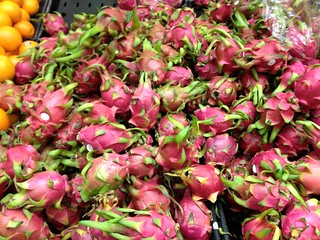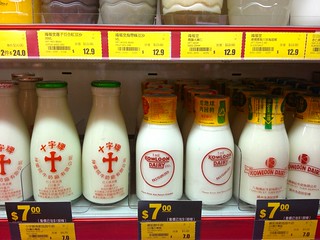The ‘Food Question’
The fishy and vegetable abominations known as “Japanese food” can only be swallowed and digested by a few, and that after long practice.  —Isabella Bird, Unbeaten Tracks in Japan, 1880
Isabella Lucy Bird was an English eccentric, a proto-backpacker, never happy in her own country. She complained of illnesses and infirmities that were reliably cured by a jaunt to India, Hawaii, or or Baghdad. In the exotic land of Colorado, she had a torrid romance with a one-eyed outlaw called Rocky Mountain Jim. This episode was left out of her 1873 book, A Lady’s Ride in the Rockies.
In 1878, Bird went to Japan. She began in Tokyo and, with a backpacker’s determination to avoid tourist traps, set off up north on horseback through Tohoku to Hokkaido. Her adventures are cataloged in Unbeaten Tracks in Japan.
Reading travel writing from even a few decades ago is a real slog, not because of any language barrier but because even an incipient feminist hellraiser like Bird can’t help but portray the locals as zoo animals, and she often seems genuinely surprised when they have recognizable human emotions, just like Europeans. The contrast is bizarre. In the village of Irimichi, Bird notes with approval the beauty of ikebana flower arranging; the lending library that supplies village children with adventure stories; and the art of Japanese calligraphy:
Giotto’s O hardly involved more breadth and vigour of touch than some of these characters. They are written with a camel’s-hair brush dipped in Indian ink, instead of a pen, and this boy, with two or three vigorous touches, produces characters a foot long, such as are mounted and hung as tablets outside the different shops.
Good, good. Until…
[L]ater, an agonising performance, which they call singing, begins, which sounds like the very essence of heathenishness, and consists mainly in a prolonged vibrating “No.”
The essence of heathenishness!
The most heathenish aspect of the Japanese was their cuisine. “The ‘Food Question’ is said to be the most important one for all travelers,” she writes. “However apathetic people are on other subjects, the mere mention of this one rouses them into interest.”
So Bird brought along canned meats, brandy, soups, and other heavy crap. I imagine her astride a Seussian camel, the rear hump piled to the sky with European delicacies.
Admittedly, Bird’s trip was only a decade into the Meiji restoration. Meat-eating was still rare in Japan, and there were no ramen shops, no tonkatsu, no Yoshinoya beef bowl restaurants. Also no Meiji-brand candy.
But the availability of these foods probably wouldn’t have made much difference. A reputation is hard to shake. Before my first trip to Japan, I took a conversational Japanese class at the local university extension. One of my classmates was a middle-aged American woman who traveled regularly to Japan for business. I asked her what advice she’d give me for my first visit to the country. “Bring food,” she said. “The portions are so small, you’ll be hungry all the time.”
This was nonsense, and Bird, too, came to regret schlepping cans of deviled ham:
After several months of traveling in some of the roughest parts of the interior, I should advise a person in average health—and none other should travel in Japan—not to encumber himself with tinned meats, soups, claret, or any eatables or drinkables, except Liebig’s extract of meat.
Humans, it turns out, can digest the local food, even if it consists mostly of raw fish, rice, pickles, “rice beer” (sake), and a profusion of bean derivatives that would make George Washington Carver proud. Bird even enjoyed the tea:
The hot water is merely allowed to rest a minute on the tea-leaves, and the infusion is a clear straw-coloured liquid with a delicious aroma and flavour, grateful and refreshing at all times. If Japanese tea “stands,” it acquires a coarse bitterness and an unwholesome astringency. Milk and sugar are not used.
Much more on tea later.
Leibig’s extract of meat is an interesting story in itself. Later called Oxo, Leibig’s was a tarry concentrate made from heavily reduced beef stock. Its biggest competitor was Bovril, originally known as “Johnston’s Fluid Beef.” But enough about the irony of the English passing judgment on anyone else’s cuisine.
* * *
Umbrellas
Seattle is not an umbrella city. In Seattle, you find tourists by looking under umbrellas. There is more than a little spite underlying the Seattleite’s antipathy to standing under a parasol: if they’re going to tell us it rains all the time in Seattle, well, dammit, we can repel it with Gore-Tex and a bad attitude. (Actually, as you’re probably tired of hearing by now, it doesn’t rain that much in Seattle.)
Tokyo, meanwhile, sprouts umbrellas like mushrooms at the first threat of rain. The most popular umbrella is made of glossy clear vinyl and sells at convenience stores for ¥500. We have six of them: three bought on our first day at the FamilyMart; two more that came with our apartment, one that Iris and I bought in Ikebukuro after going out umbrella-less. We also have a child-sized polka-dot umbrella.
I’m still learning how to use an umbrella, and I keep pestering Laurie with Stupid Umbrella Questions and poking people with my umbrella spokes. Luckily, this is not New York, and people in Tokyo are far too polite to say, “Hey, watch it, fuckface.” Slowly, however, I’m learning the right moment to furl my umbrella in #1 Pretty Good Alley before entering the covered Nakano Sun Mall. And I’ve gotten used to repairing my umbrella by stuffing a couple of free-swinging naked spoke ends back into their plastic aglets before setting out.
Nearly every establishment in Tokyo offers either an umbrella stand or umbrella bags outside the entrance. This morning, in a downpour, I walked into the Nakano Starbucks with a dripping umbrella and apologetically asked, “*Kasa wa…?*” (What should I do with my umbrella?) An employee ran to the other entrance and brought me a plastic umbrella bag, which I clumsily slipped over my umbrella. I haven’t come close to mastering the umbrella bag, an impressively wasteful device which works like an umbrella condom and is similarly discarded after use. The bottom few inches of my umbrella always pudge out from the bottom of the bag like a muffin top.
Tokyo’s umbrella culture reaches full flower at Shibuya Crossing on a rainy day. Shibuya Crossing is probably the busiest pedestrian crossing in the world, although a claim like that is hard to verify. (Laurie visited what is allegedly Japan’s largest bathroom, a 64-stall behemoth at Venus Fort shopping mall. Like an American roadside attraction, Japan takes great pleasure in its superlatives.)
In any case, Shibuya Crossing certain *feels* like the busiest. It’s a multi-way pedestrian scramble; you’ve probably seen photos or seen it in *Lost in Translation.* Every three minutes, the light changes and three thousand pedestrians cross in all directions with amazingly little pushing and shoving, even when you jam three thousand umbrellas into the mix. The umbrellas are mostly the clear *kombini* special, but one in ten is solid color, or striped, or polka dotted, or solid color with two translucent wedges, a popular parasol-umbrella hybrid. The slow-moving color umbrellas are like hand-painted frames in a black and white movie. Climb to the second floor of Shibuya Station, or the Starbucks across the street, and you can watch this hypnotic ballet from above.
City life and umbrellas have been partners for a long time, because the modern umbrella is anything but modern: the extendable hub-and-spoke design goes back at least as far as first-century China. You can see this history in the kanji for “umbrella,” which is perhaps the most pictographic of all the kanji:
傘
* * *
**Noodle Breakfast**
Finally worked up my courage to join the salarymen (and occasional women) for breakfast at the noodle stand across from Nakano Station. The noodle stand, which doesn’t seem to have a name, has a yellow awning reading INAKA SOBA UDON. I’m not sure whether Inaka (“country-style”) is the name of the place or just a description of the fare.
The noodle place can accommodate six diners, standing room only. You wait for a spot to open up at the counter, poke your head under the _noren,_ and order fast. It’s not a place you walk into; you’re literally standing on the street while you eat. I scouted the joint for several days, trying to read snippets of the menu as I walked past, because I didn’t want to be the stammering foreigner holding up the line, or, worse, the self-important foodie who wants to discuss every aspect of the menu while everyone else is just trying to get to work.
Now that I’ve had my breakfast, I can tell you how it’s done. You will be shocked to learn that Inaka Soba Udon serves two dishes: soba and udon. You call out your noodle of choice, which is quickly refreshed in hot water and tossed into a pottery bowl, where it gets a ladle of shoyu-based noodle broth and a handful of sliced Japanese leeks. Leeks are much more common than scallions here, and they are delicious.
The trick is in the toppings. The menu at Inaka is just a list of potential additions to your noodle bowl. I took a quick look left and right, saw a kakiage (vegetable tempura cake) luxuriating in a neighboring bowl, and requested one for my soba, plus a raw egg. The serving process takes about ten seconds and is presided over by an old woman who I assume is the owner; she didn’t cook while I was there, but she takes the money and makes sure everything runs smoothly. You hand over the cash while the cook makes your noodles; that way you can run for the train as soon as you finish. My soup was Â¥420, about $5. Other popular toppings are kitsune (fried tofu) and chikuwa, a sausagelike tube of fish paste which is tastier than it sounds.
My soba arrived steaming hot and fragrant from the negi and shoyu. I haven’t figured out how to eat Japanese noodles anything like a native: when I slurp, it makes the wrong kind of noise, and I’m always biting off noodles and letting them drop back into the bowl, which is a no-no. Furthermore, I looked down the counter and noticed I was the only one accumulating a palette of broth droplets in a six-inch radius around my bowl, which the owner discreetly wiped away occasionally with a towel. The kakiage became reassuringly saturated with broth; I’m learning to appreciate the texture of fried foods dunked in liquid, which is very common here. And I broke my egg yolk and stirred the egg into the soup. My favorite part of the meal was lifting the bowl to my mouth and drinking the broth, rich from egg and tempura grease and noodle starch, sturdy enough to fortify me for several hours of intense writing.
That’s not a joke. Really! This is the first morning that I haven’t found myself dreaming of Mister Donut around 9:30. I ate my soup as fast as I could but it wasn’t fast enough: the guy at the end of the counter who came in after me and, I was pleased to note, ordered the same thing I did, finished his soup before me and ordered a second bowl. The portions at Inaka are country-style. A second bowl would have killed me, but then, I was just walking a block to the Starbucks, not dashing for the Chuo Rapid and a day of meetings and piecharts and, uh, whatever it is businesspeople do.




